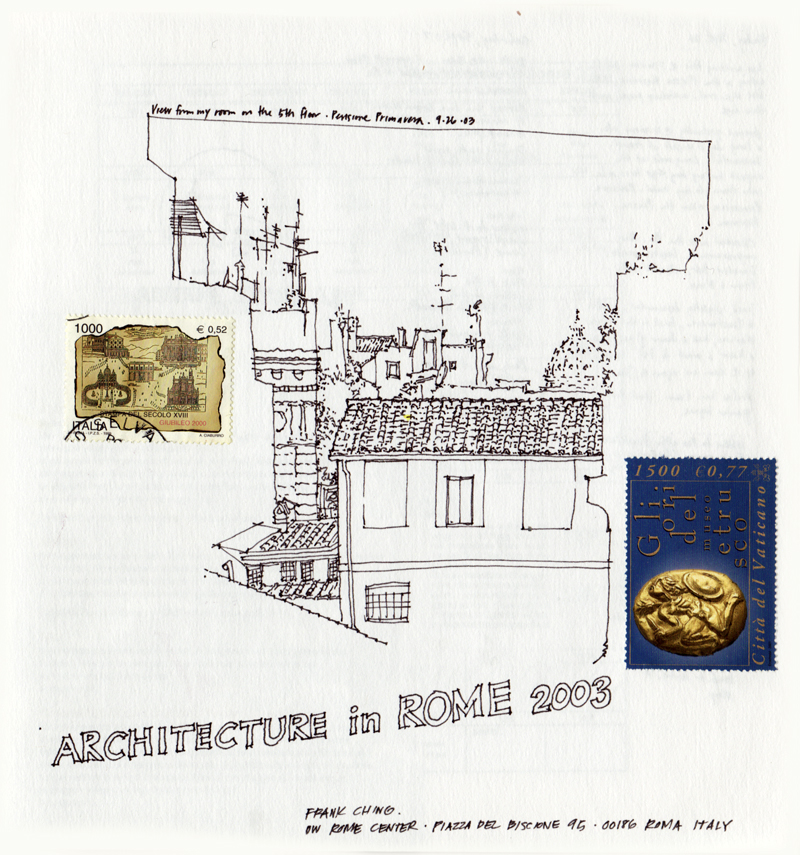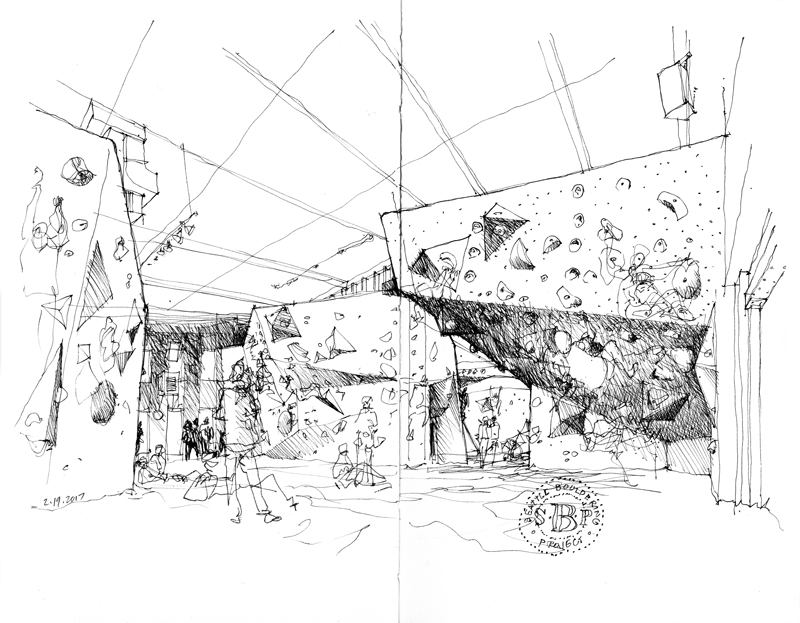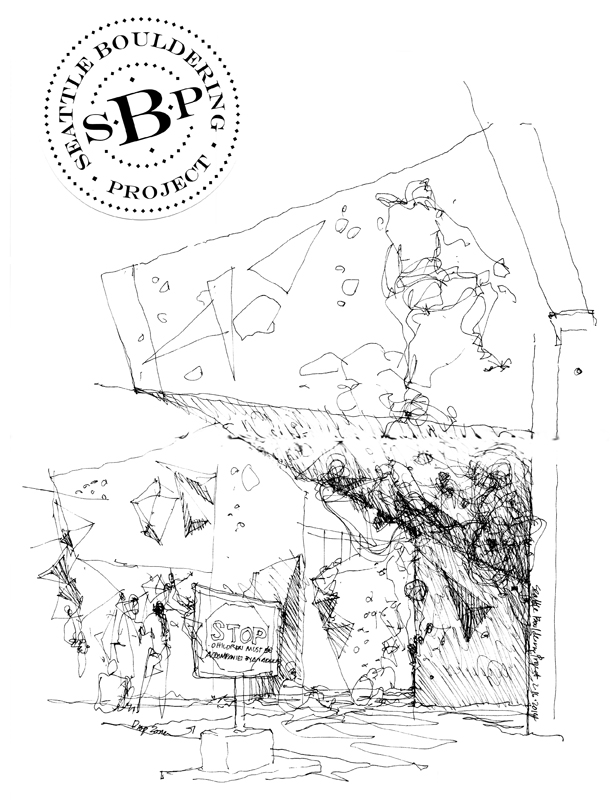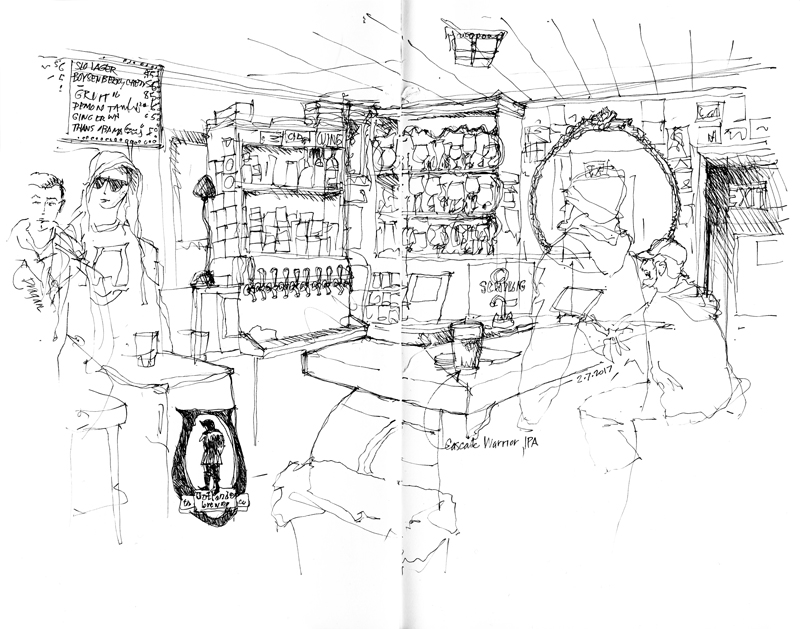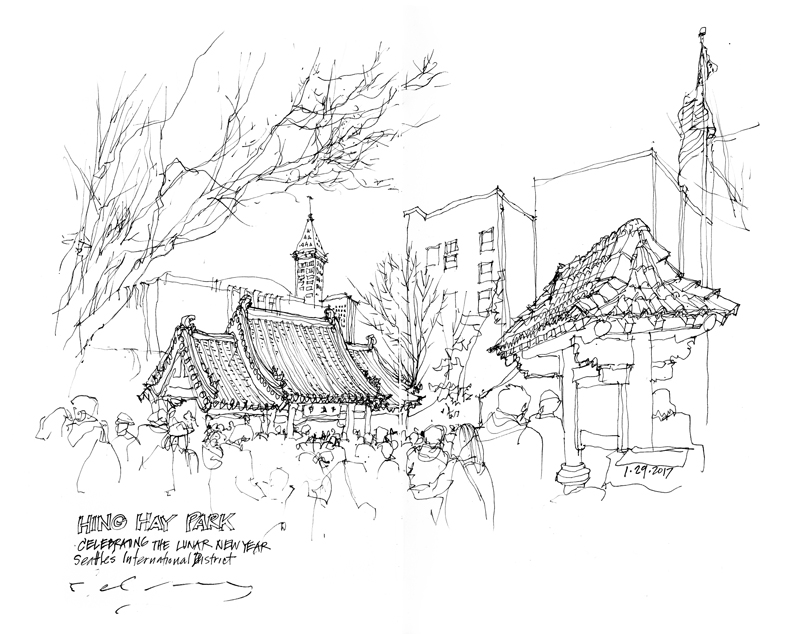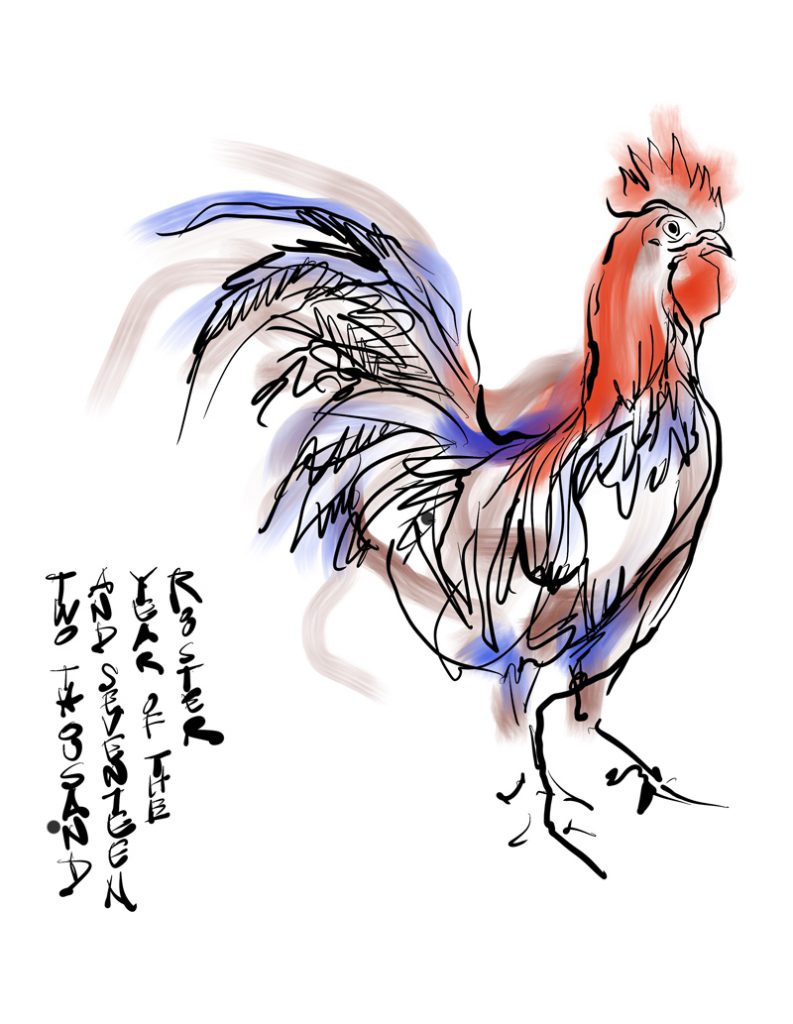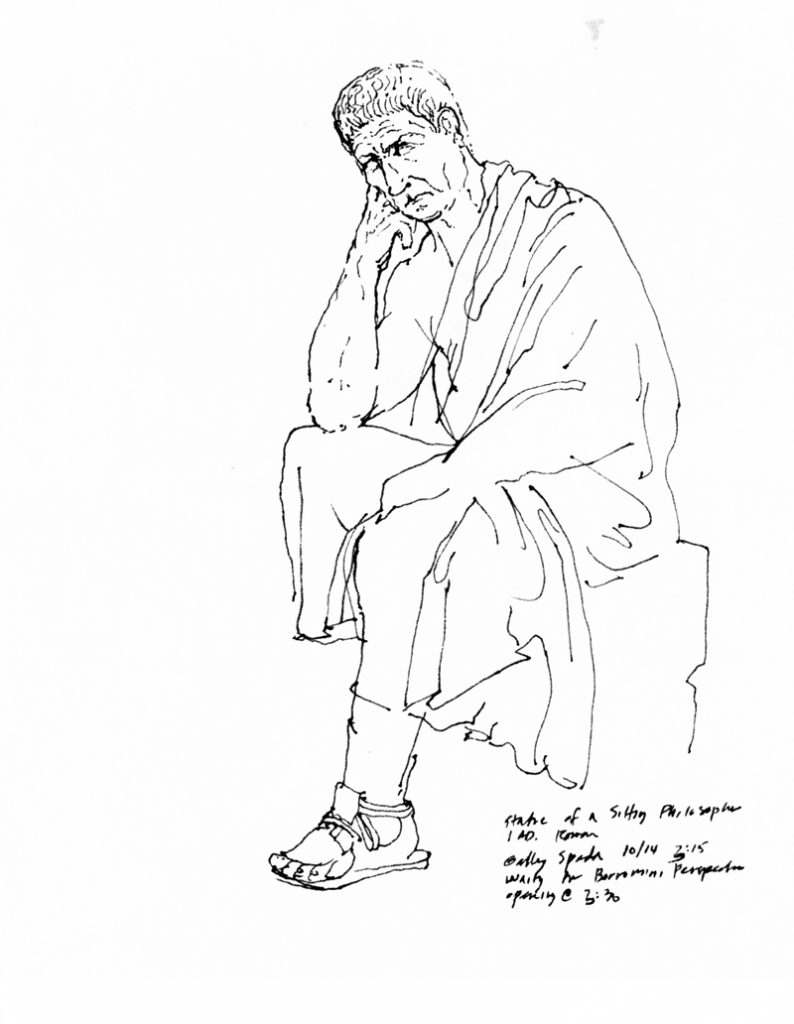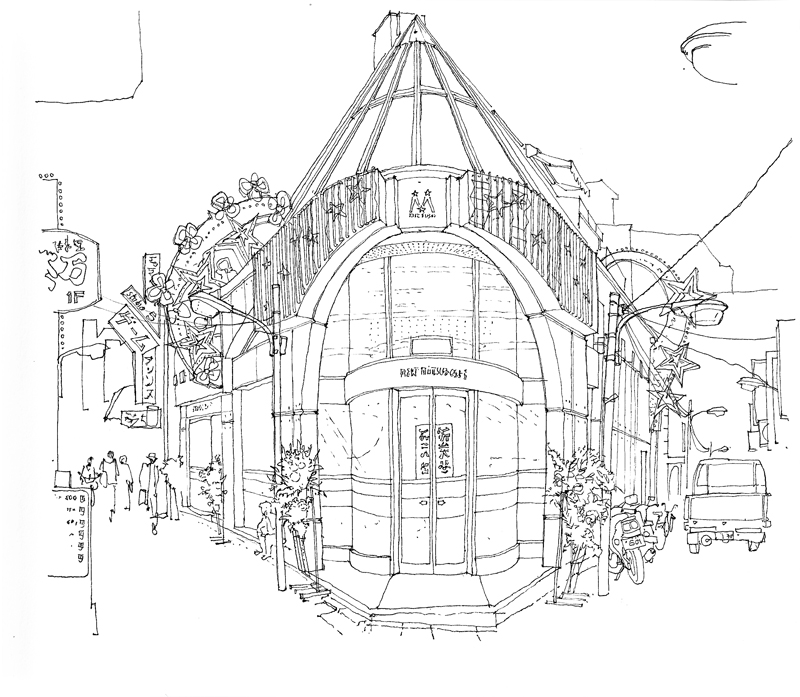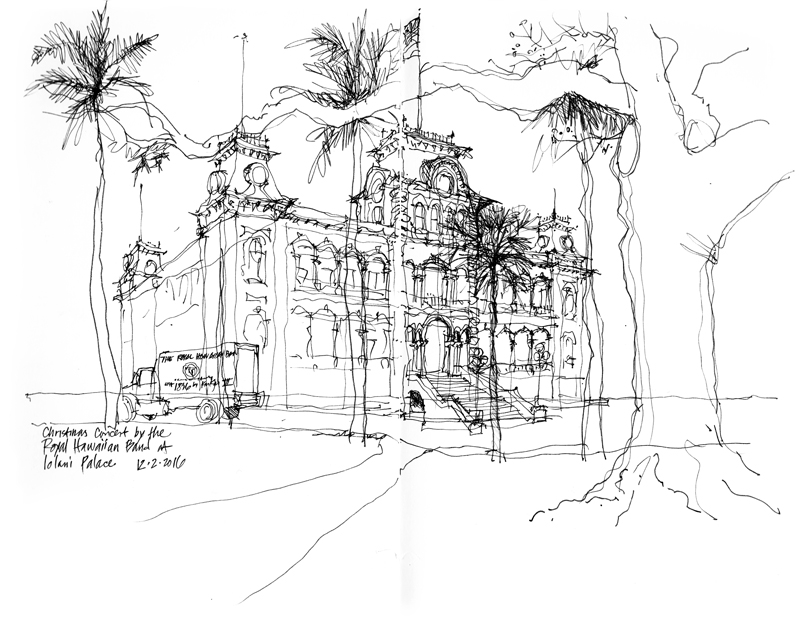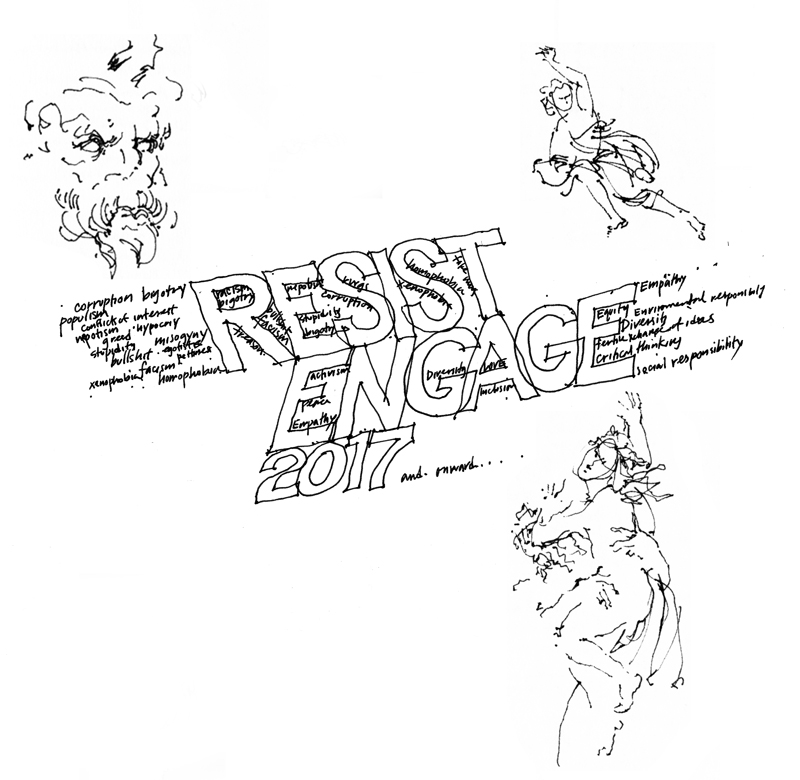Notebooks, sketchbooks, journals… whatever one chooses to call these bound collections of pages, they all provide a physical sense of permanence and chronology and, in use, they become a repository of images and writings capable of reminding us of where we have been, what we have seen, and what we have experienced. But even as we acknowledge the pleasure of perusing these collections, we should also appreciate the process by which they are made. No single page in a journal is precious; not all pages must be perfect. In the act of making visible our experiences, reflections, and discoveries, we become more sensitive to and connected with our surroundings, expand our visual memories, and stimulate our imagination.
Seattle Bouldering Project
It was almost exactly three years ago that the local UrbanSketchers group met at the Seattle Bouldering Project, a climbing gym that offers a range of classes to introduce beginners to the sport as well as help more experienced climbers develop techniques for strong and skilled climbing. Avoiding the cool, rainy weather, we met at the same indoor environment again this morning. It’s interesting to compare these two views. The one above was drawn today from a point a little further back and offers a little wider view than the sketch below, done in 2014. As always, trying to capture the climbers themselves was difficult because of their constant movement so all you might be able to see are their ghost images.
Outlander Brewery and Pub
Following up on my previous post on Reuben’s Brewing, I visited Outlander Brewery and Pub just down the street here in the Fremont neighborhood of Seattle. This is a view of the tiny barroom in the century-old house that serves as a pub on the street level, with a brewery in the basement. Dragan Radulovic and Nigel Lassiter opened Outlander the same year as Reuben’s but unlike the medium size of Reuben’s, Outlander is a small-scale brewery that uses a 3.5 barrel system to produce experimental beers, usually specialty ales.
Reuben’s Brews
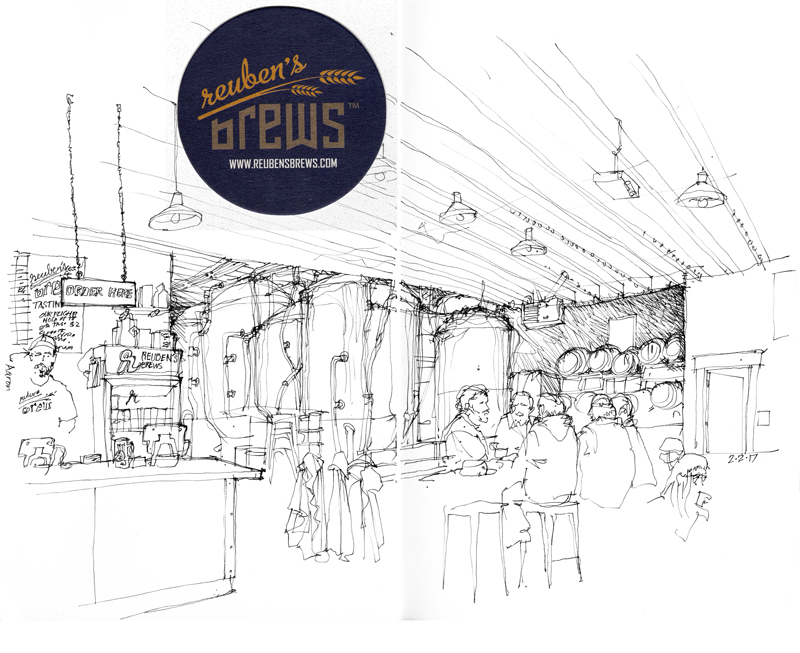 During the cold, often wet winter months, it’s not easy finding warm, dry places to draw. But if one likes well-crafted brews, then there is always the taproom of a local brewery to visit. This is Reuben’s Brews taproom in the Ballard neighborhood of Seattle. Adam and Grace Robbings started the medium-sized brewery in 2012 and named it after their son Reuben. Since its opening, Reuben’s has garnered numerous national and international awards for their wide variety of brews
During the cold, often wet winter months, it’s not easy finding warm, dry places to draw. But if one likes well-crafted brews, then there is always the taproom of a local brewery to visit. This is Reuben’s Brews taproom in the Ballard neighborhood of Seattle. Adam and Grace Robbings started the medium-sized brewery in 2012 and named it after their son Reuben. Since its opening, Reuben’s has garnered numerous national and international awards for their wide variety of brews
A Celebration of Seattle’s Asian Community
These are people gathered in Hing Hay Park in Seattle’s International District to celebrate the Lunar New Year and witness dragon and lion dances, Taiko drumming, and martial arts performances.
In his opening remarks, Seattle Mayor Ed Murray reminded us all of how a mob rounded up Chinese from this very neighborhood on February 7, 1886, and tried to force them aboard a steamship for passage out of Seattle. And how the Japanese, many of whom were American citizens, were forced to evacuate their homes and businesses the week of April 28, 1942, an expulsion authorized by Executive Order 9066, which President Roosevelt had signed on February 19, 1942.
And so despite DT’s cruel, mean-spirited, and un-American actions of this past week, Mayor Murray asserted that as we celebrate the rich, diverse cultures of this Asian community, Seattle remains committed to being a welcoming city for refugees and immigrants in need.
Kung Hee Fat Choy!
Happy Lunar New Year and welcome to the Year of the Rooster. Those born under this Chinese Zodiac sign are said to be loyal, trustworthy, confident, and sociable. Some say a rooster can also be pompous—always bragging about himself and his accomplishments. This reminds me of someone who shall remain nameless.
Drawn with an Apple Pencil, using the Procreate app on an iPad.
20 January 2017
A Pachinko Parlor in Tokyo
Happened to watch an episode of the new NBC game show, The Wall, which reminded me of this pachinko parlor in Tokyo. The Wall features an oversized version of the pachinko board, which operates like a vertical pinball machine. In pachinko, one or more steel balls are launched to the top of the playing field, which is filled with brass pins. Entering the field at the top, the steel balls fall freely, bouncing and careening from one pin to another, and finally entering one of several cups at the bottom. Upon entering a pachinko parlor, one is greeted with the chime-like sounds of the falling steel balls from hundreds of pachinko machines.
Iolani Palace
While the recent cold snap is easing a bit here in Seattle with temperatures returning to the upper 30s, I still miss the warmth and fragrance of Hawaii. During our recent trip there, I did this quick 20-minute sketch while waiting for the weekly Friday performance by the Royal Hawaiian Band on the grounds of Iolani Palace. King Kamehameha III founded the brass band in 1836, which is now considered to be the oldest, full-time municipal band in the U.S. I still remember as a child growing up in Honolulu attending their Sunday afternoon concerts at the Kapiolani Park Bandstand in Waikiki.



